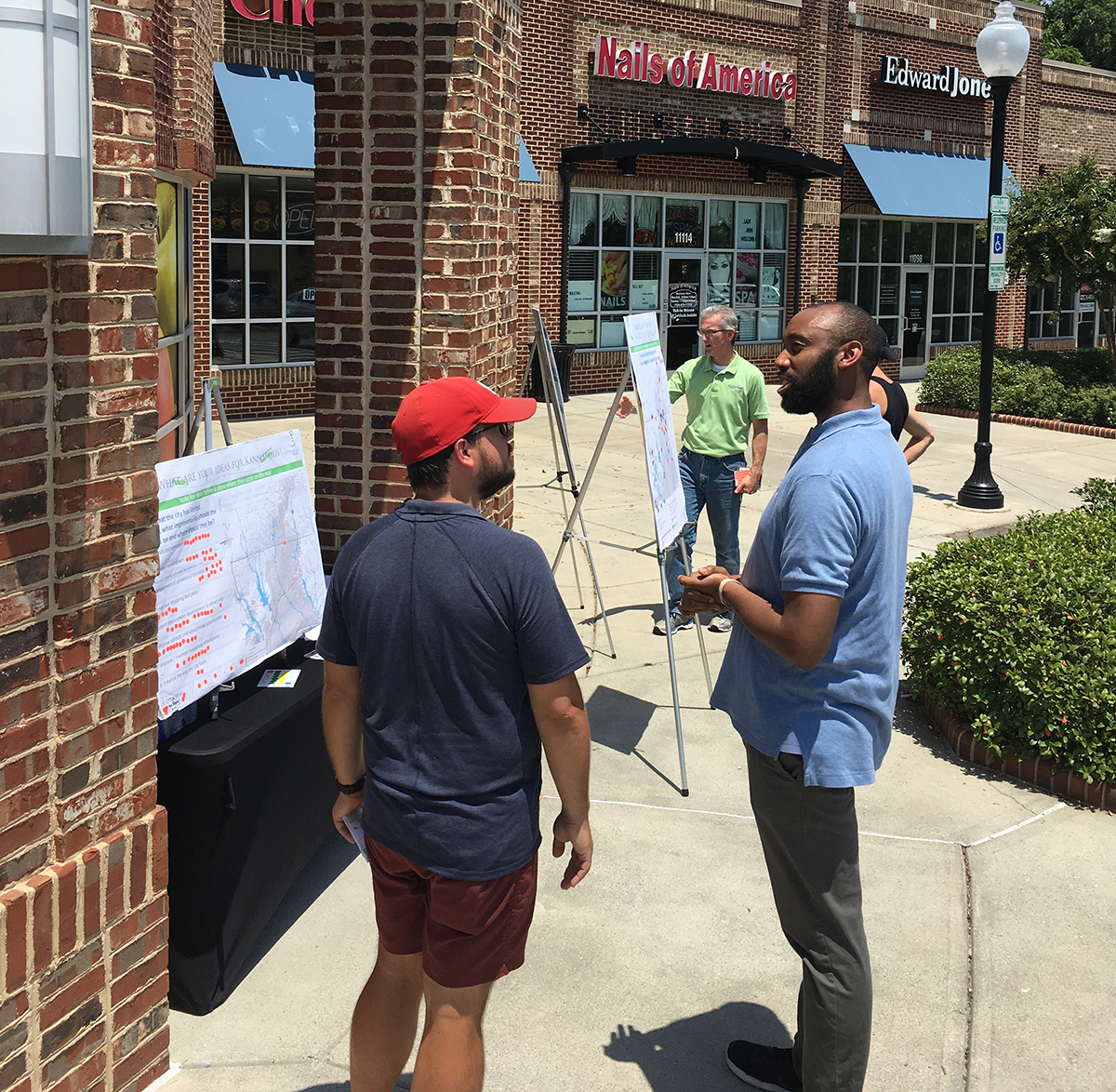A toolbox for local governments to address inequality.

Conversations about equity dominated the American Planning Association National Conference held in New Orleans in April. Inequality has risen to the forefront of policy discussions, spinning off debates around the usual suspects: access to opportunity, gentrification and displacement, affordable housing, transit, economic justice, and other issues that affect vulnerable communities. Equity even influences other aspects of the human condition, such as isolation and despair.
Inequality is not a new topic for planners, but the modern challenge of inequality as it relates to race and income is a unique one for planners. Unlike many previous urban crises like urban renewal, sprawl, and exclusionary zoning practices, the origins, scope, and perpetuation of 21st century inequality extend beyond the power of the planner, the borders of the planner's jurisdiction, and the powers of local government. This leaves planners and policymakers scrambling to assemble tools that help alleviate inequality's impacts without addressing the origins of the crisis.
Luckily, there are ways planners can help local governments alleviate disparities and promote fairer cities that serve everyone. Planners' understanding of the interrelationships between complex issues and their context-sensitive solutions makes them uniquely qualified to play a key role in this process. Inclusive planning at the local level is a powerful tool for dealing with the symptoms of inequality and more communities are taking steps to diagnose the problem and find solutions. Their concerns about inequality are not misplaced; many communities we've worked in have seen median wages stagnate, and commute times and costs of necessities increase.
Increasingly, planners and policymakers are recognizing and identifying the challenges facing their cities as they look to address equity. Todd Litman at the Victoria Transport Policy Institute provides a call for truly responsive and inclusive planning, focusing on walkable urbanism, higher density infill development, social equity, environmental justice, and multimodal transportation options. Several local governments are making inclusive planning a focus in their community-wide planning, including their comprehensive plan process. One example is the Charlotte Future 2040 Comprehensive Plan process currently in its first phase, which includes an approach based on three overriding principles concerning inclusive planning: 1. Authentic and Equitable Participation; 2. Interwoven Equity; and 3. Integrated Framework for Growth, Development, and Community Design.
Surprisingly, there are few definitions available for inclusive planning, so we constructed our own that we think will be useful for communities looking to implement inclusive planning approaches. We define inclusive planning as a two-pronged process: 1) involving a fair representation of citizens providing meaningful and educated input and 2) where planners advocate for greater equity in public policies that address the multiple objectives of urban planning including sustainable development, housing, transportation, economic development, and environmental justice.
Approaches to Inclusive Planning
Here is a brief list of high level inclusive planning approaches that some communities have begun using. We'll dig into each of these a little deeper in future posts.
Genuine Public Engagement

The literature on public engagement approaches in planning is nearly inexhaustible. Yet, public engagement in planning processes often fails to reach a significant number of stakeholders, and those that do participate are often not a truly representational cross-section of a given community. Susan Fainstein, a research scholar at Harvard Graduate School of Design whose research and writing has focused on the distributive effects of urban development strategies, points out in her book Just City that citizen-engagement does not necessarily result in better planning, especially without a robust public education process or overrepresentation of one group over others.
Modern planning approaches use a blend of online and multiple in-person outreach tactics. Combined with effective education of planning influences, strategic analytics that track who is providing input, and a meaningful and transparent platform, genuine public engagement provides important data points to both influence policy in a way that improves choices for people and sets the stage for effective implementation. Participatory budgeting is one tool that has begun gaining traction in multiple communities.

Making Housing Affordable
With fewer federal and state resources available for funding low-income housing, local governments are stepping up and collaborating to fund these projects using local funding sources. Accurately diagnosing the most pressing problems and then crafting a patchwork variety of creative tools and policies, some local governments have found ways to help stimulate the development of affordable housing to their middle-income and low-income residents, and in some cases, provide it themselves. This year, the American Planning Association - North Carolina Chapter Affordable Housing Task Force was established to generate local case studies, regulatory tools, programs, and funding mechanisms to help assist communities with affordable housing. This information could help chip away at the growing need for affordable housing across the state.
Beyond Affordable Housing: Healthy and Affordable Lifestyles
While housing is typically a household's largest expenditure, costs associated with transportation, health care, child care, and education have risen during recent years, and policymakers are increasingly aware of the multiple impacts of the geography of jobs and housing. That's why it is important to look beyond housing affordability, and examine the far more complex but relevant questions around affordable lifestyles and making sure citizens have healthy and active ways to get around. Increasingly, affordable housing within transit-oriented development has become recognized as a fundamental strategy for making the most of subsidized affordable housing.
Work, Wages, and Evolving Trends in Economic Development
The national unemployment rate is at an historic low while worker productivity continues to climb. Yet, people are working more jobs for longer hours in more tenuous circumstances, and they are facing longer commutes, stagnating wages, and underemployment. Many of these challenges increasingly need to be addressed by creative planners in urban, rural, and suburban contexts.
Human Services and Social Safety Nets
Social safety nets? Isn't that just for the federal government to worry about? Where federal or state governments have not acted, some local governments are providing critical services for pre-K, health care, elderly services, and other important social services. These investments have occurred in both politically red and blue cities and states, reflecting the potential long-term cost-savings that can be derived from investments in these services.
Zoning, Density, and Property Tax
One of the first steps in addressing inequality at the local level is to fix broken land development rules that might prohibit walkable cost-efficient development, like small-lot housing. Updating land development ordinances to remove barriers to development and incentivize good development allows naturally-occurring affordable housing and affordable lifestyles. Understanding and addressing property taxes and valuation is a related strategy, and communities have discovered challenges arising from land speculation, student housing, and a variety of other factors that require creative and tailored solutions.
Looking Ahead
These are important tools and my colleagues and I are committed to providing readers with practical tools and information for addressing the modern challenges associated with inequality, especially as more policymakers seek ways of using inclusive planning strategies to harness limited resources for addressing complex problems. Future posts will include more detail and case studies of how communities are using inclusive planning to address inequality and related challenges. Comments and experiences from your community are appreciated.
Further Reading
- The New Urban Crisis, by Richard Florida
- The Just City, by Susan S. Fainstein
- Radical Cities, by Justin McGuirk
- Making Equity Planning Work, by Norman Krumholz
- A Better Way to Zone, by Donald L. Elliott
 Nate Baker, AICP, is an associate with Clarion Associates in Chapel Hill, North Carolina, where he focuses on inclusive public engagement, comprehensive plans, and land development regulations. He began his career as a planner in El Paso, Texas, where he managed development applications and worked toward implementing Plan El Paso. Most recently, he has worked on plan and code projects in Alabama, South Carolina, North Carolina, Virginia, and Pennsylvania, helping communities achieve vibrant, walkable, and equitable visions. Nate is a recent Fulbright Research Fellow, and studied international models for regional planning in Brazil. He is fluent in Spanish and Portuguese and has helped communities provide outreach to Hispanic populations. Nate lives in his hometown, Durham, North Carolina, where he currently serves on the Planning Commission.
Nate Baker, AICP, is an associate with Clarion Associates in Chapel Hill, North Carolina, where he focuses on inclusive public engagement, comprehensive plans, and land development regulations. He began his career as a planner in El Paso, Texas, where he managed development applications and worked toward implementing Plan El Paso. Most recently, he has worked on plan and code projects in Alabama, South Carolina, North Carolina, Virginia, and Pennsylvania, helping communities achieve vibrant, walkable, and equitable visions. Nate is a recent Fulbright Research Fellow, and studied international models for regional planning in Brazil. He is fluent in Spanish and Portuguese and has helped communities provide outreach to Hispanic populations. Nate lives in his hometown, Durham, North Carolina, where he currently serves on the Planning Commission.

‘Forward Together’ Bus System Redesign Rolling Out in Portland
Portland is redesigning its bus system to respond to the changing patterns of the post-pandemic world—with twin goals of increasing ridership and improving equity.

Plan to Potentially Remove Downtown Milwaukee’s Interstate Faces Public Scrutiny
The public is weighing in on a suite of options for repairing, replacing, or removing Interstate 794 in downtown Milwaukee.

Can New York City Go Green Without Renewable Rikers?
New York City’s bold proposal to close the jail on Rikers Island and replace it with green infrastructure is in jeopardy. Will this compromise the city’s ambitious climate goals?

700-Acre Master-Planned Community Planned in Utah
A massive development plan is taking shape for lakefront property in Vineyard, Utah—on the site of a former U.S. Steel Geneva Works facility.

More Cities Ponder the End of Drive-Thrus
Drive-thru fast food restaurants might be a staple of American life, but several U.S. cities are actively considering prohibiting the development of new drive-thrus for the benefit of traffic safety, air quality, and congestion.

Air Pollution World’s Worst Public Health Threat, Report Says
Air pollution is more likely to take years life off the lifespan of the average human than any other external factor, according to a recent report out of the University of Chicago.
Placer County
City of Morganton
HUD's Office of Policy Development and Research
Dongguan Binhaiwan Bay Area Management Committee
City of Waukesha, WI
Los Angeles County Metropolitan Transportation Authority
Indiana Borough
Write for Planetizen
Urban Design for Planners 1: Software Tools
This six-course series explores essential urban design concepts using open source software and equips planners with the tools they need to participate fully in the urban design process.
Planning for Universal Design
Learn the tools for implementing Universal Design in planning regulations.


